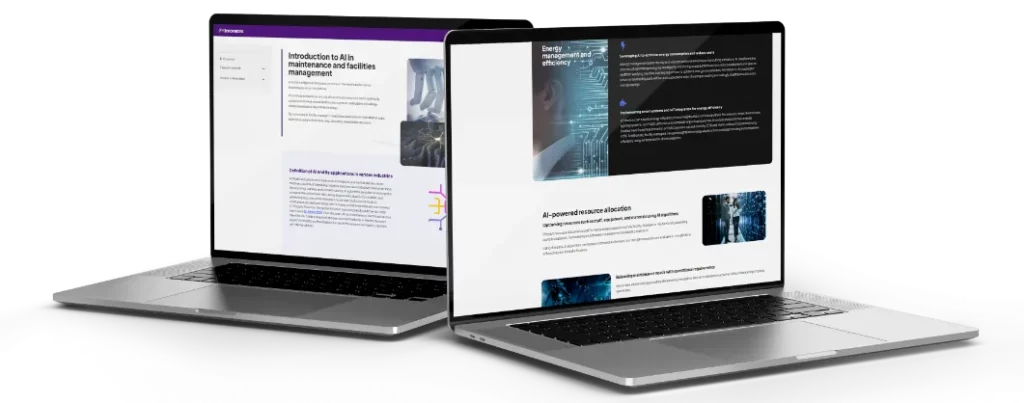What is compliance in asset management?
Asset management aims to increase the return on each investment and make companies more competitive. Compliance is “conforming” to a certain plan, regulation, legislation, or standard (namely OSHA or ISO standards). Therefore, compliance in asset management refers to meeting the standards stipulated for the industry or sector concerned.
How important is compliance in asset management?
Let’s stop thinking in abstract terms, since compliance goes far beyond the ISO rules we always hear about.
In a public transport company, for example, a “non-compliance” would be a cancelled journey or a delay. In the case of Transportes Urbanos de Coimbra, an urban bus transport company, a study found that the main cause of missed journeys (“non-conformities”) were vehicle breakdowns (“assets”). In the case of CP — a Portuguese trains company, breakdowns of vehicles are also the main reason for complaint.
In both cases, it is not by any means implausible to assume that preventive maintenance could avoid some non-compliances. In CP’s specific case, EMEF (the company owned by CP that is dedicated to the manufacture, rehabilitation, maintenance, and repair of trains) is “unable” to perform all the recommended periodic maintenance tasks.
On one hand, CP’s trains are, on average, 50 years old (twice the European average). The assets are at a stage of their lifecycle where they need a lot of maintenance. On the other hand, EMEF is facing a lack of human resources. This explosive cocktail decreases compliance with maintenance plans and compromises the quality of public transport.
Compliance is essential to ensure the smooth operation of assets, provide a good user experience, and avoid costly repairs.
Internal vs. external compliance
It should also be said that there are two types of compliance. “Internal” compliance concerns internal processes and the quality of the product or service. An internal audit is very useful to ensure standardisation of processes and to create a momentum for continuous improvement. If you detect a non-conformity during the audit, you can apply reactive actions and resolve the issue internally.
On the other hand, “external” compliance refers to compliance with state standards and other regulations. When a non-compliance is detected, it will most likely have serious (and public) consequences for the company. For example, if a company is not GDPR compliant, it risks paying a fine of up to €20 million. Not to mention the consequences of Volkswagen’s non-compliance when it comes to pollutant emissions.
Therefore, compliance management is not only important for the company to achieve the goals set internally, but also to manage its reputation in the market.
Biggest challenges to compliance in asset management
Supplier management
The case of CP — which owns the company responsible for the maintenance and repair of its equipment — is rare. As asset management and maintenance does not always generate immediate gains, most companies resort to outsourcing. Therefore, it becomes challenging to manage all suppliers, and ensure that they maintain compliance with all standards.
A potential solution to this problem is defining service level agreements, or maintenance SLAs. In these types of agreements, you define performance indicators and the level of service quality you expect, as well as penalties for non-compliance. So, if there is non-compliance, the supplier also has something to lose.
Lack of human resources
However, there are many more challenges that companies face. As we saw in the case of CP, lack of human resources is another challenge. In maintenance, companies are constantly competing for manpower. Here at Infraspeak we have discussed this issue before, and even put together some tips to try and reduce maintenance technician turnover.
Constant change and evolving technology
Another challenge is the constant changes in regulations and laws. During the pandemic, facility managers had to quickly get used to new regulations and demonstrate their resilience. However, as science and technology advances, there are always changes in indoor air quality requirements and laws about gas emissions, for example.
Any professional engaged in asset management needs to be constantly up to date. As for technicians, they need to be receptive to adopting new technologies. Robotics, automation, and artificial intelligence will dominate the future of asset management.

Investment in compliance
On the other hand, Deloitte points out that increasing costs to improve compliance — whether with human resources or technology — can be a challenge for companies that need to invest in the core business. Still, as we will see, perhaps here lies the solution to automating processes and increasing compliance in asset management.
How can technology transform asset management compliance?
Using an asset management software dramatically changes the way you monitor plan compliance. These are the four main benefits of turning to technology:
Digitise information
Without data, you can’t do good asset management. That’s why it’s important to digitise information. Plus, if you record some of that data automatically, with the help of sensors, you reduce human error.
Compliance monitoring / surveillance
In addition, you can also use this data to generate reports and ensure that you are complying with all requirements. Without an organised system, it is very easy to evade protocols.
Automate audits
Audits are very effective in detecting non-conformities and applying reactive measures. With asset management software, you can set up automatic audits and prevent errors from being perpetuated over time.
Supplier management
Through various integrations, you can bring together all the information from different suppliers on a single platform. This facilitates the risk management associated with outsourcing services.
3 success stories on asset management compliance and efficiency
Frostline
Using Infraspeak’s IMMP solution, HVAC and solar panel company Frostline streamlined their operations. Repairs and maintenance were bottlenecked by inefficient communication and lack of information.
After integrating an EAM solution, Frostline technicians can find relevant information through their smartphones. Technicians can find manuals, work order info and everything else in one place. The Infraspeak app also tracks time spent on each work order making invoices more accurate.
📈 For Frostline, this has boosted their deal success rate by 40%.
Vila Galé Hotels
As one of the biggest hotel groups in Portugal, Vila Galé has over 8500 rooms and more than 3,000 employees spread across their 37 hotels. This means handling a lot of assets spread across multiple sites.
Vila Galé used Infraspeak to reduce the response time and minimise the amount of micro-managing needed. Now, 80% of unnecessary exchanges have been eliminated, with staff able to retrieve information themselves.
As a result, Vila Galé managers spent less time on the phone troubleshooting problems — by 50%. This means guests were inconvenienced far less and for less time. This has not only helped protect physical assets but also Vila Galé’s reputation.
Siemens (SLA Compliance)
As one of the world’s biggest engineering companies, Siemens is responsible for the Bank of Portugal’s infrastructure operations. This includes HVAC maintenance, space maintenance, and responsibility for onsite equipment.
Siemens successfully used Infraspeak’s EAM to meet the central bank’s quality standards and deadlines. This has kept Siemens meeting their SLA requirements. Siemens’ operations became more transparent and in accord with legal demands.
Siemens utilised mobile technology and NFC tags to make technicians more autonomous. This data is available to Siemens and the Bank of Portugal, improving transparency.


